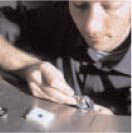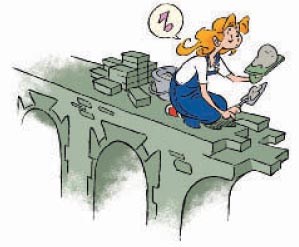|
|

2 Transition to vocational education
Schools have found that introducing students to vocational educational programmes at an early stage is beneficial. Early introduction to vocational education at primary and lower secondary school levels can give students a chance to acquaint themselves with a range of professions and branches, and to learn about what it is like to be a VET student. Students can become more familiar with the content and demands of VET programmes, and thus have a better basis for making their own choices. They can become aware of vocations that they never knew existed, such as that of communications electrician, or they can discover that, contrary to popular opinion as shown on TV, painters do not produce artistic interior decoration at the drop of a hat. Early introduction to vocational colleges can prevent later culture shock, because students are better prepared for an educational setting that from day one targets the labour market. The study presents examples of collaboration between vocational colleges, lower secondary schools, production schools, Youth Education Counselling Centres, and trainee programmes. Bridge-building with primary and lower secondary schoolsBridge-building also with young primary school children Bridge-building is not confined to the voluntary 10th grade.[2] Vocational colleges have collaborated with younger students - at EUC MIDT[3] as young as 3rd grade. Here, 3rd through 6th grade students are paired up and build a house on a 1:20 scale. In this way they become acquainted with VET Building and Construction programmes. House construction becomes more advanced with each passing year. The goal is to give students an overview of the entire process - starting with creativity, continuing through design and technique, and ending with the practical work of construction. Vocational College students as ambassadors Bridge-building is not merely about having primary and lower secondary school students visit technical colleges; bridges are also built in the other direction. Students at Aalborg Technical College's Food Production and Catering entryway visit primary and lower secondary schools, where they tell about their experiences as VET students. Evidence shows that younger students are more likely to listen to peers who are just a bit older than themselves than they are likely to listen to adult, professional counsellors.
Institutionalized collaboration between school and municipality Bridge-building is becoming a form of institutionalized collaboration between EUC Syd and all of the primary and lower secondary schools in the town of Sønderborg. Based on an agreement with Sønderborg's mayor, the goal is for all 10th grade students to have participated in bridge-building activities so as to have a more informed basis for their choice of upper-secondary educational programme. Collaboration with production schoolsTime spent at a production school contributes to student clarification The Employer Confederation of Metal Crafts and Industry and the Union of Metal Industries have collaborated on the implementation of transition programmes between production schools and technical colleges. Slagelse Production School and Selandia Vocational College offer students the possibility of participating in a clarification programme. This gives students a better idea of those main programme specializations that are related to the Crafts and Engineering entryway. In addition, students with learning difficulties have their vocational skills strengthened and their self-confidence boosted, thereby reducing their risk of dropping-out. A breather for students about to drop out A short stay at a production school can be a good solution for students who are about to drop out of the basic programme period. This can give them a breather where they can strengthen their personal competences as a prerequisite to completing the basic programme. Conversely, there are examples of students at production schools who enter vocational colleges in order to find out if they are ready to start vocational education; these are typically students who have already dropped out of a vocational education programme. Trainee programmesTraineeships for minors The Crafts and Engineering Trades programme has established a nation-wide initiative which gives young people a chance to try out vocations in a trainee-like situation. Trainees must be under 18[4] and have finished the ninth grade. The Employer Confederation of Metal Crafts and Industry and the Union of Metal Industries feel that this programme has been a success; when the trainee realizes that this branch is really not for him or her, as well as when the trainee establishes an apprenticeship. The initiative comprises an outreach programme with Denmark's 46 Youth Education Counselling Centres in order to establish a greater number of trainee programmes.
Observations
Foot notes 2) A voluntary extra year of lower secondary education before the student enters an upper secondary programme. 3) EUC is a series of vocation colleges in Mid (MIDT), South (Syd), North (NORD), and West (Vest) Jutland. 4) Special dispensation has been given by the Danish Working Environment Authority, using the same model as for production schools.
|
||
|
To top of page |


